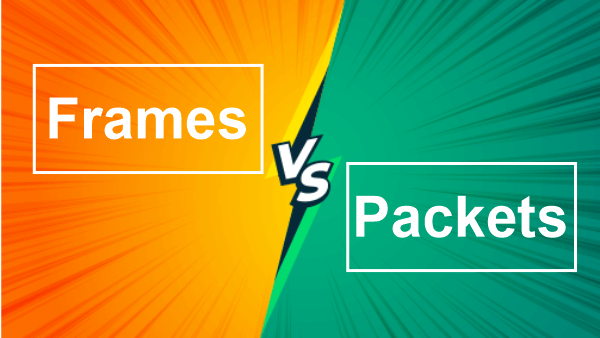Difference between Frames and PacketsIn this article, you will learn about the difference between Frames and Packets. But before discussing the differences, you must know about the frames and packets. What are Frames?A frame is a type of digital data transmission unit utilized in networking and telecommunications. A frame is a straightforward container for a single network packet in packet-switching systems. A frame is a repetitive structure in other telecommunications that allows for time-division multiplexing. Frame synchronization is a component of most frames, and it is made up of a series of bits or symbols that signal the beginning and end of the payload data inside the stream of symbols or bits received by the receiver. When a frame is transmitted, a receiver connected to the system ignores the information until it notices a fresh frame synchronization sequence. What are Packets?A packet is any small data block transmitted via a packet-switching network. The term packet comes from character-oriented protocols in which unique start-of-frame and end-of-frame characters are inserted while transferring packets. A packet is a protocol data unit utilized in the network layer. The major role of the network layer is to deliver packets from one logical address to another. A packet is a single unit of data exchanged between two network devices. The router employs IP packet headers to transport packets from source to destination via the network. Main Differences between the Frames and Packets
Here, you will learn the main differences between Frames and Packets. Some main differences between Frames and Packets are as follows:
Head-to-head comparison between the Frames and PacketsHere, you will learn the head-to-head comparisons between the Frames and the Packets. The main differences between the Frames and the Packets are as follows:
ConclusionFrames and packets are protocol data units that are used at various OSI layers. First, a segment of data that typically includes the transport header and data is moved from the transport layer to the network layer. Segments are categorized into packets that include the segment at the network layer and an IP header with the source and destination IP addresses. Finally, the packets are contained in frames. After transmitting the created frame, the data link prepends its header with the source and destination MAC addresses.
Next TopicDifference between
|
 For Videos Join Our Youtube Channel: Join Now
For Videos Join Our Youtube Channel: Join Now
Feedback
- Send your Feedback to [email protected]
Help Others, Please Share










